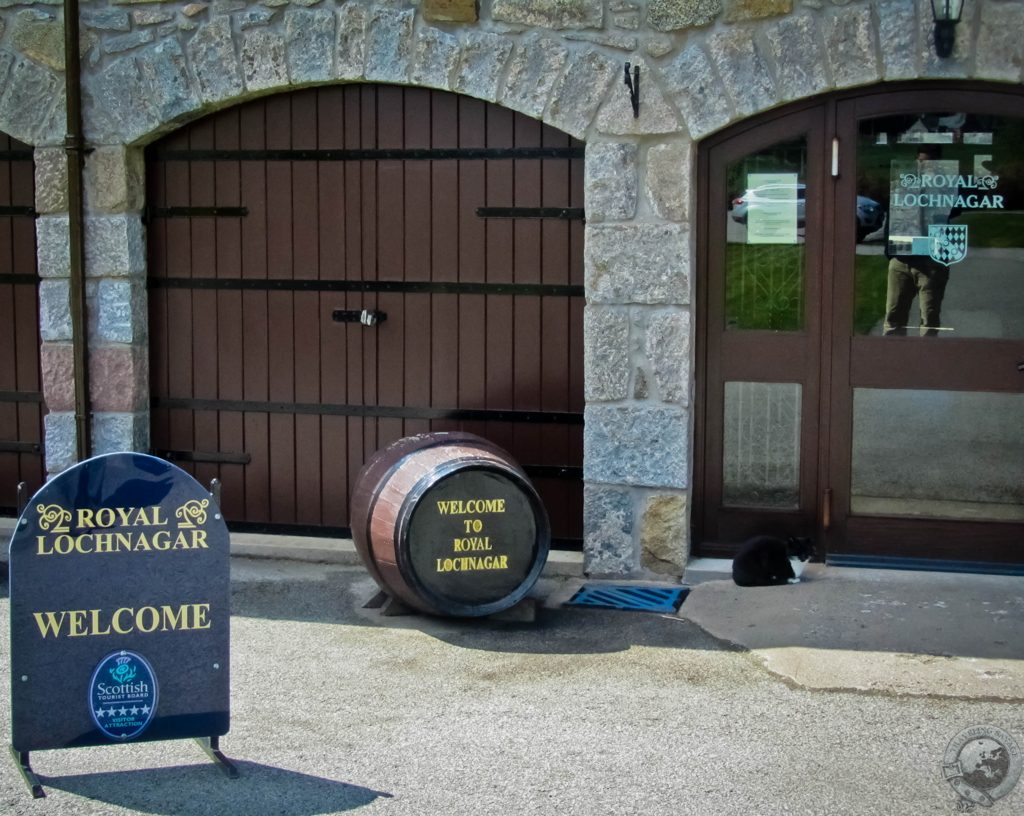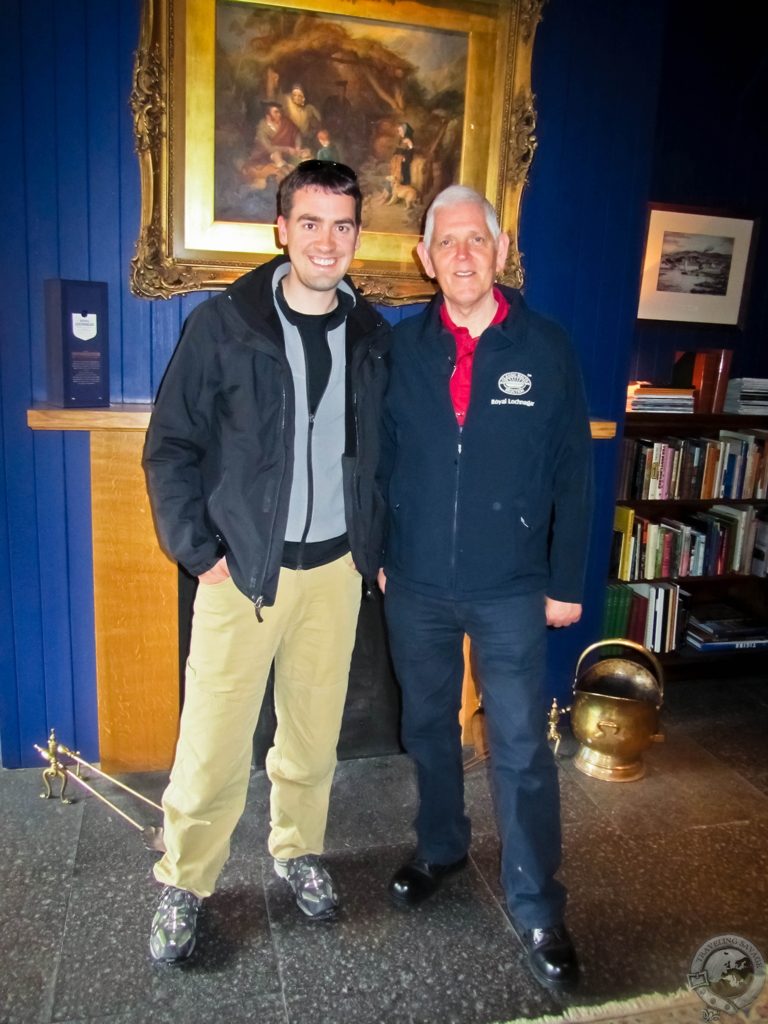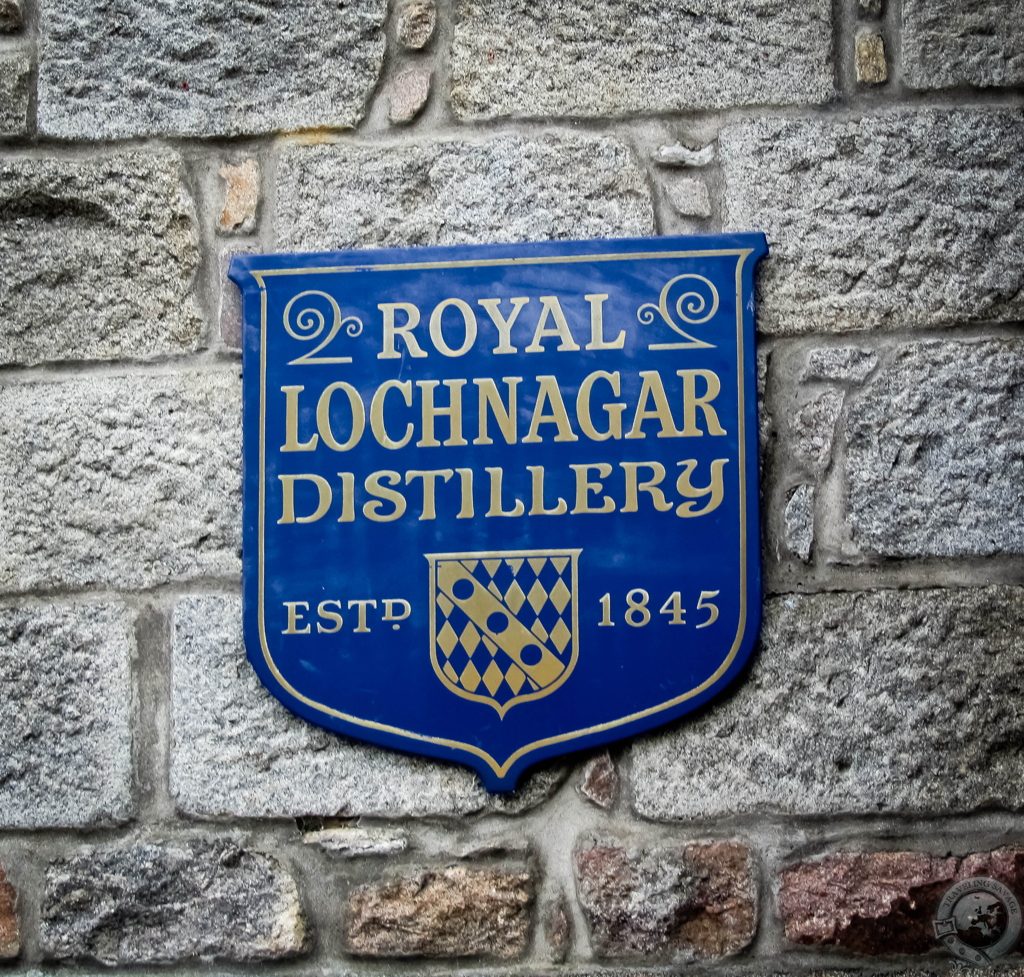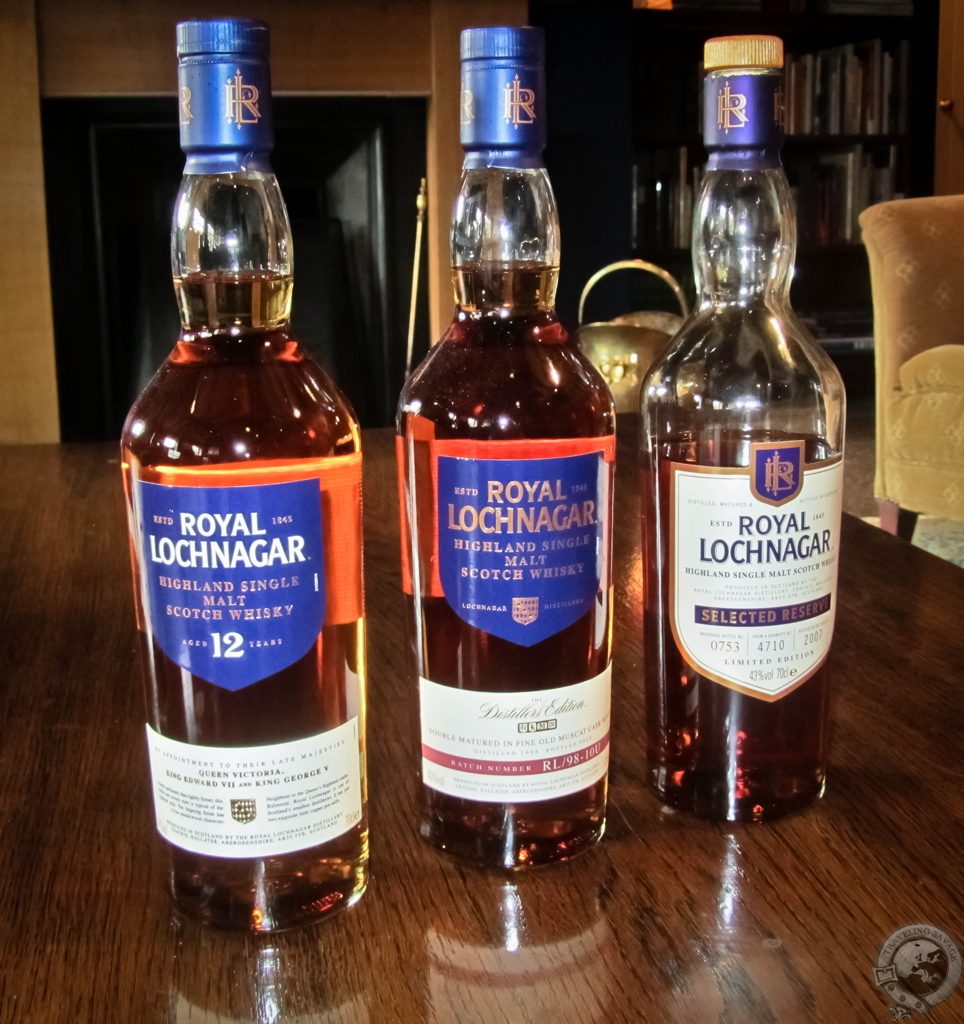The snow-capped peak of Lochnagar pierces the sky above the green, leafy hills of what is now the Balmoral Estate in the Royal Deeside region of Scotland. Lochnagar, an extinct volcano with a blasted crater, hides a small lochan, or lake, from which its name derives: loch of the noise. Lochnagar also shelters a far-from-noisy, eponymously-named distillery in the fields beneath the mountain, and it was here – not up the mountain – that my travels led me.
This part of Scotland, only a couple of hours south of the Speyside whisky Mecca, is curiously unpopulated by distilleries. Thankfully, there’s Royal Lochnagar Distillery. Seeing as how it’s only a stones-throw from Balmoral Castle, you might think the two are one and the same. In fact, Royal Lochnagar pre-dates the building of Balmoral and used to be known simply as Lochnagar before a visit from Queen Victoria and Prince Albert. The Royals were so impressed that they immediately bestowed a Royal Warrant of Appointment on the distillery (these warrants were all over the place in Ballater, on pharmacies, gift shops, etc.). To this day Royal Lochnagar is the whisky you’ll find inside Balmoral Castle, or so I’m told.
The distillery oozes with Victorian-era appeal. Light woods contrast with rich navy blue paint, and there’s a museum-like quality to the distillery (an observation that would be credited later). Donald Renwick, the distillery manager, met me and Sarah shortly after we arrived and led us to a comfortable sitting room where we discussed the glowing history of Royal Lochnagar. I mean that in the most literal sense; the distillery has burned down twice. What with all the alcohol fumes and grain dust in the air, it only takes a tiny spark to create a bomb-like explosion.

Today, Royal Lochnagar is the smallest distillery in Diageo’s portfolio, and given its size and remoteness, according to Donald, it wouldn’t be commercially viable except that the spirit is in high demand by whisky blenders and malt enthusiasts alike. Johnnie Walker Blue, for example, has quite a bit of Royal Lochnagar in it. At 400,000 liters/year, Royal Lochnagar is small, but not as small as independent distilleries like Edradour and Benromach.
Donald knows his whisky. He’s spent 30 years in the industry and came over to Royal Lochnagar from a post at Lagavulin – about as drastic a shift in style as I can imagine. Donald takes us from the cozy blue room into the bright, May sun as a highly-detailed tour of the distillery kicks off. I spot my first traditional, open-top mash tun in use (Benromach has one in a museum) and see a nice old batch of worm tubs used for cooling the distillate. Donald mentions that there hasn’t been a lot of money put into the distillery.
Inside the stillhouse, the air is hot and heavy as two stills are running full bore. With only one wash and one spirit still each, you can only produce so much whisky, but the key to increasing production is to move their running times closer to 24 hours/day. It’s a tough juggling act for most distilleries as they typically only employ a handful of people. When we stop in the warehouse, I’m happy to see a large batch of Sherry butts waiting to be filled. Just seeing the type of cask tells me some of what I can expect from the whisky – rich, dark spicy sweetness and dried fruits from Sherry. I’m still a Royal Lochnagar virgin at this point, but that’s all about to change.

After a tour to whet the appetite, Donald brings us back to the sitting room and reveals the Royal Lochnagar range: 12 Year, Distiller’s Edition, and Special Reserve. We start the tasting with a splash of “baby Lochnagar” or their newmake (unaged) spirit. At 63% ABV, it’s very strong and immature with grainy metallic flavors. Newmake spirit, however, is excellent for picking out the characteristics of the distillery without wood “getting in the way.” The foremost flavor/aroma here is one of green grass.
We move on to proper whisky with a taste of the 12 Year. Sadly, as both Sarah and Donald will be driving soon, I’m the only one tasting. The whisky is clear gold with green apple and grassy aromas. The flavor is slightly sweet with very faint oaky notes. With a dash of water, the malty sweetness comes out, and green apples and green grape skins are perceptible on the palate. This is a perfect starter whisky. It’s easy to drink and there’s no burn, only a bit of heat.
Next up is the Distiller’s Edition, a common expression among Diageo’s distilleries. This one is a dark, beaten gold in color with thicker “legs” so I know the body is a bit oilier. The Distiller’s Edition spends some time in a Moscat wine cask at the end of maturation to impart various sweet and fruity flavors. The nose is smoother than the 12 Year and very fruity. On the palate, it has a darker sweetness; dried red fruits, spices, and gummy or jellied fruits. Ginger and grassy fragrances appear with a dash of water, and the flavor reminds me of spiced fruitcakes. Quite sweet.
We end with the Special Reserve, once the most expensive whisky in Scotland. This whisky aims for the flavor profile of the whisky Queen Victoria would have had in the 19th century. There’s no age statement on the bottle, which gives the distillery freer reign to mix and match casks to achieve that unique flavor. The whisky is amber in the glass and smells strongly of Sherry and something…old. It’s pleasant. The flavor is ramped up from the Distiller’s Edition with stronger essences of jellied fruits, cinnamon, raisins, spices, and fruitcake. It’s slightly stronger than the other whiskies and would make a perfect winter dram.
A few years back Diageo extended its range of Classic Malts, which now includes Royal Lochnagar in the Highland category. Unfortunately for those of us in the States, they don’t export to the USA. If you needed another reason to come to Scotland, there it is.
Full disclosure: I was provided with a complimentary tasting and tour. All thoughts and opinions expressed here are my own.



Good enough for me. I’m ready to go!
YUM. i love this story – time to head back to scotland!
I don’t really like whiskey but would love to visit a distillery or two in Scotland! I’m sure it would taste much better in Scotland 🙂 Interesting post, enjoyed it very much.
You might just develop a taste for whisky after visiting a distillery in Scotland. It’s happened to two people in my family!
This story makes me thirsty!